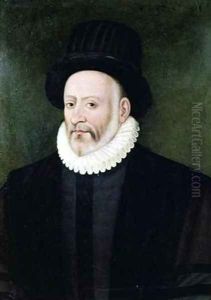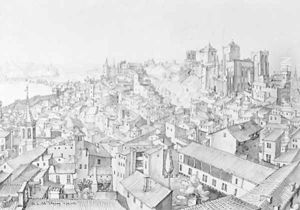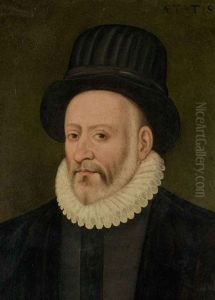Etienne Martellange Paintings
Etienne Martellange was a French Jesuit brother and architect who played a significant role in the dissemination of the Baroque style in architecture throughout France during the early 17th century. Born in Lyon in 1569, Martellange was not only an architect but also a draftsman and a painter, although he is primarily remembered today for his architectural contributions.
Martellange joined the Society of Jesus (Jesuits) in 1586 and dedicated his life to the order. As a Jesuit brother, he took on the task of designing and overseeing the construction of Jesuit colleges and churches across France following the Counter-Reformation, which sought to reaffirm Catholic identity in the face of Protestant Reformation. Martellange's work is characterized by its adherence to the Jesuit style, which combined elements of Renaissance and Baroque architecture, emphasizing grandeur and theatricality to inspire religious devotion.
During his career, Martellange traveled extensively throughout France, leaving behind a trail of significant buildings that include the Jesuit colleges in Paris, Rouen, and Lyon. He is known to have designed at least twenty-four Jesuit institutions. One of his most notable projects was the construction of the Chapel of the Trinity in Lyon, completed in 1622, which stands as a testament to his skill in incorporating Italian Baroque elements into French architecture.
Apart from his architectural endeavors, Martellange was also a meticulous draftsman, recording not only his architectural designs but also a wide variety of landscapes, urban views, and details of daily life in his numerous drawings. These drawings are of great historical value as they provide insights into the French urban and rural landscapes of the early 17th century.
Martellange's contribution to architecture was not limited to his own works; he also played a crucial role in the training of future architects. His influence extended through his teaching and the wide dissemination of his designs, which were often used as models by other architects.
Etienne Martellange passed away in Paris in 1641. His legacy continues to be appreciated by historians and enthusiasts of Baroque architecture. Despite being less well-known than some of his contemporaries, Martellange's work remains an important part of the architectural heritage of the Jesuit order and the broader history of French architecture during the period.


